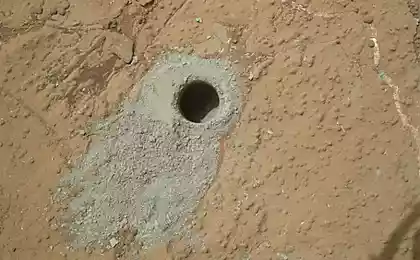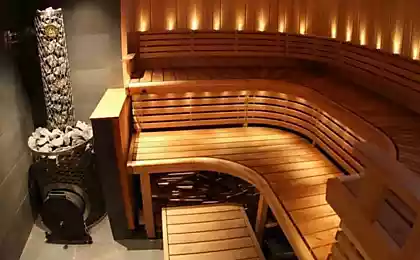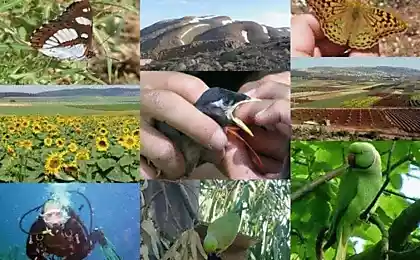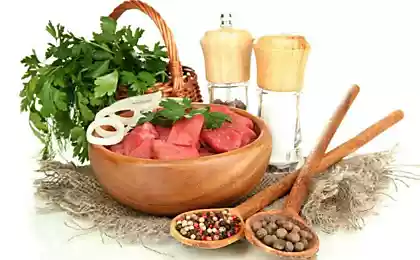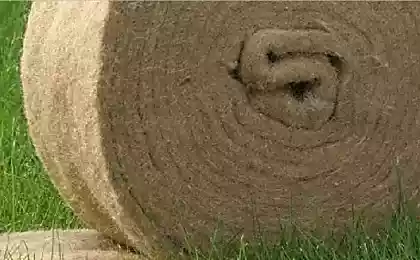510
Organic insulation for Your home
Peat blocks Peat is sifted, mixed with water and grind to a thick smooth paste. Then it added waste wood, the blocks are pressed and dried. Peat has antiseptic properties, so blocks are not affected by fungi and mould, and porous structure of the insulator is not damaged by freezing condensate. This eliminates the need paroizoliruyuschimi membranes and forced ventilation.
Insulation wall made of peat blocks with a thickness of 0.5 m is comparable to a wooden wall with a thickness of 1.5 m. the strength of the material ensures easy transportation and installation. Blocks are self-supporting, stacked with ligation, without mortar. They can withstand considerable stress, do not shrink and can be used as a construction material for walls and partitions in frame houses. The developers claim that the durability of such walls will be at least 75 years.
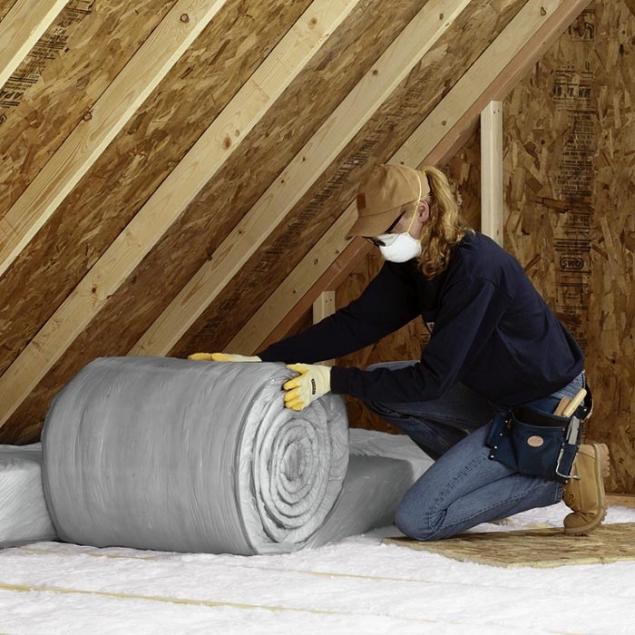
"Cellulose"Cellulose wadding – environmentally friendly building insulation and material, consisting mainly of products of secondary processing of paper and wood fibers. Minerals boron-containing additives as antiseptics, fire retardants provide resistance to putrefaction and the spread of fire. The insulation is a lightweight, loose mass with a porous structure and is applied to insulate the surface using a mobile of a blowing machine. After spraying, the material fills all the allotted cavity, penetrating even to remote places. A continuous insulating contour and the lack of fasteners leave no chance for leakage of heat unlike heat insulator in the form of tapes and rolls.
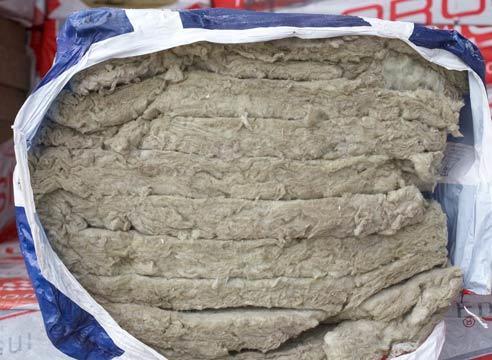
Cellulose wadding suited for insulation of almost all building structures: walls, floors, pitched roofs and interior partitions. Exception – areas with constant high humidity. The reason for the high hygroscopicity of the material – it can absorb water 5-6 times of its own weight. Despite the fact that "cellulose" is not afraid of water and after drying it recovers its insulating properties when wet it is ineffective.
Sheep's woolNatural insulation material is partly new and partly from recycled wool. The raw materials are thoroughly washed with soap and soda and processed into fibers or felt, adding a means to deter insects. The views of manufacturers on the introduction into the material of flame retardant substances differ. In the Russian market of insulation, in which these additives are absent, which means that there is ecological purity of the material.
Produced insulator in the form of wool fabric with different densities, thickness of 20-120 mm. Extra strength gives him a felt lining. The hair in high humidity conditions can absorb water up to 30% of its dry weight and then to release it. It provides a comfortable microclimate in the house, and also eliminates the need for a vapor tight film.
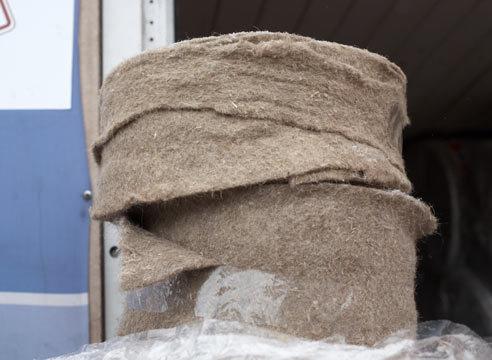
Material based on sheep wool used for thermal insulation of floors, partitions, walls, between rafters in the construction of frame panel houses. Due to their flexibility they are easy to use even in places with complex geometry. To the wooden frame they are fixed using a stapler. Thin (10-18 mm) and narrow (10 cm) wool fabric acts as mezhventsovogo insulation in wooden frames.
HardboardThey are made by deep processing of chips and other wood waste. The raw material is crushed and split into individual fibers, adding a binder, then pressed into plates of the desired thickness. The change in the degree of grinding you can get plates of different strength and density.
Having a low thermal conductivity, good vapor permeability and high strength, soft plates can be both an insulator and finishing material. So, no need to prepare the surface for finishing – painting or plaster. Dense structure of the plates allows to completely abandon the internal finishing works. The material is easily mounted and processed with the standard tools for working with wood.
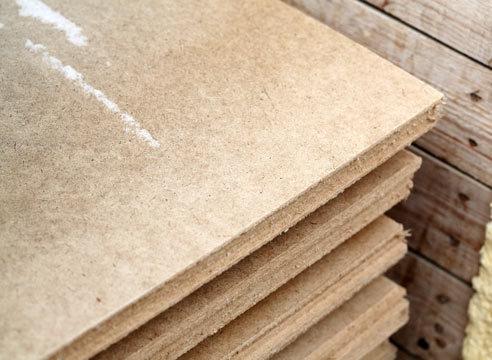
Boards do not change their structure, not afraid of fluctuations in relative humidity, so do not shrink and deform. The fibre binds and releases moisture, regulating the humidity inside the house but without losing their insulating properties. Therefore, the soft plate for effective thermal and acoustic insulation of all buildings, especially wooden.
The tube isQuite exotic for Russia, the material is made from the bark of the Mediterranean cork oak, its main plantation is located in Portugal. Raw materials are crushed into powder and treated with hot steam under high pressure. The binding component is a natural resin of the cork, and so the material remains environmentally friendly. The resulting mass is pressed into forms, and after solidification cut into individual plates. The porous structure of the tube provides low thermal conductivity and good permeability, and the presence of resinous substances gives it resistance to rot and mould. Low water absorption, flexibility and elasticity make these boards one of the best insulating materials. Tube is appreciated worldwide, but the stocks of raw materials are limited.

Light cork boards are easy to install and well cut. This material can be used for interior and exterior insulation of buildings. Chemical inertness allows its use in contact with bitumen, for example, on flat roofs. Insulated cork slabs, the facades are well suited to plaster. Panels of cork have good sound insulation and very decorative – they trim the floor and the walls. published
P. S. And remember, only by changing their consumption — together we change the world! ©
Join us in Facebook , Vkontakte, Odnoklassniki
Source: www.supersadovnik.ru/text/organicheskie-utepliteli-1002731
Insulation wall made of peat blocks with a thickness of 0.5 m is comparable to a wooden wall with a thickness of 1.5 m. the strength of the material ensures easy transportation and installation. Blocks are self-supporting, stacked with ligation, without mortar. They can withstand considerable stress, do not shrink and can be used as a construction material for walls and partitions in frame houses. The developers claim that the durability of such walls will be at least 75 years.

"Cellulose"Cellulose wadding – environmentally friendly building insulation and material, consisting mainly of products of secondary processing of paper and wood fibers. Minerals boron-containing additives as antiseptics, fire retardants provide resistance to putrefaction and the spread of fire. The insulation is a lightweight, loose mass with a porous structure and is applied to insulate the surface using a mobile of a blowing machine. After spraying, the material fills all the allotted cavity, penetrating even to remote places. A continuous insulating contour and the lack of fasteners leave no chance for leakage of heat unlike heat insulator in the form of tapes and rolls.

Cellulose wadding suited for insulation of almost all building structures: walls, floors, pitched roofs and interior partitions. Exception – areas with constant high humidity. The reason for the high hygroscopicity of the material – it can absorb water 5-6 times of its own weight. Despite the fact that "cellulose" is not afraid of water and after drying it recovers its insulating properties when wet it is ineffective.
Sheep's woolNatural insulation material is partly new and partly from recycled wool. The raw materials are thoroughly washed with soap and soda and processed into fibers or felt, adding a means to deter insects. The views of manufacturers on the introduction into the material of flame retardant substances differ. In the Russian market of insulation, in which these additives are absent, which means that there is ecological purity of the material.
Produced insulator in the form of wool fabric with different densities, thickness of 20-120 mm. Extra strength gives him a felt lining. The hair in high humidity conditions can absorb water up to 30% of its dry weight and then to release it. It provides a comfortable microclimate in the house, and also eliminates the need for a vapor tight film.

Material based on sheep wool used for thermal insulation of floors, partitions, walls, between rafters in the construction of frame panel houses. Due to their flexibility they are easy to use even in places with complex geometry. To the wooden frame they are fixed using a stapler. Thin (10-18 mm) and narrow (10 cm) wool fabric acts as mezhventsovogo insulation in wooden frames.
HardboardThey are made by deep processing of chips and other wood waste. The raw material is crushed and split into individual fibers, adding a binder, then pressed into plates of the desired thickness. The change in the degree of grinding you can get plates of different strength and density.
Having a low thermal conductivity, good vapor permeability and high strength, soft plates can be both an insulator and finishing material. So, no need to prepare the surface for finishing – painting or plaster. Dense structure of the plates allows to completely abandon the internal finishing works. The material is easily mounted and processed with the standard tools for working with wood.

Boards do not change their structure, not afraid of fluctuations in relative humidity, so do not shrink and deform. The fibre binds and releases moisture, regulating the humidity inside the house but without losing their insulating properties. Therefore, the soft plate for effective thermal and acoustic insulation of all buildings, especially wooden.
The tube isQuite exotic for Russia, the material is made from the bark of the Mediterranean cork oak, its main plantation is located in Portugal. Raw materials are crushed into powder and treated with hot steam under high pressure. The binding component is a natural resin of the cork, and so the material remains environmentally friendly. The resulting mass is pressed into forms, and after solidification cut into individual plates. The porous structure of the tube provides low thermal conductivity and good permeability, and the presence of resinous substances gives it resistance to rot and mould. Low water absorption, flexibility and elasticity make these boards one of the best insulating materials. Tube is appreciated worldwide, but the stocks of raw materials are limited.

Light cork boards are easy to install and well cut. This material can be used for interior and exterior insulation of buildings. Chemical inertness allows its use in contact with bitumen, for example, on flat roofs. Insulated cork slabs, the facades are well suited to plaster. Panels of cork have good sound insulation and very decorative – they trim the floor and the walls. published
P. S. And remember, only by changing their consumption — together we change the world! ©
Join us in Facebook , Vkontakte, Odnoklassniki
Source: www.supersadovnik.ru/text/organicheskie-utepliteli-1002731



